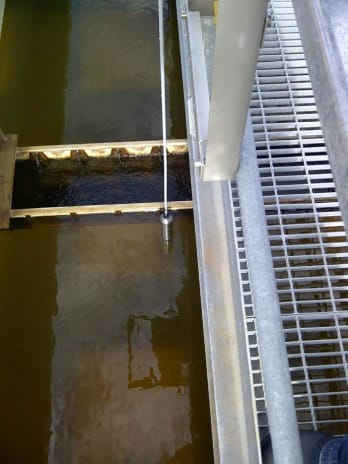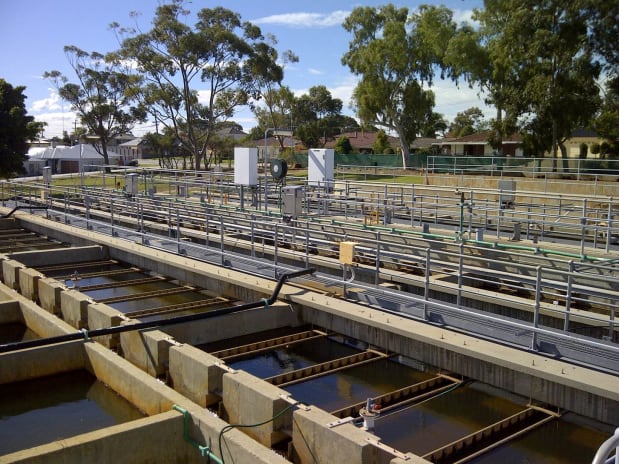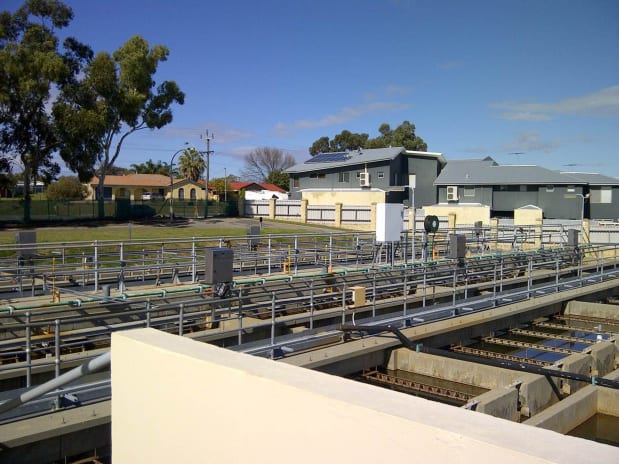Measuring the sludge blanket in a groundwater treatment plant
Application Report | Water & Wastewater
- Cleaning groundwater using flocculating agent
- Direct, optical monitoring of sludge blanket level in 16 sedimentation tanks
- Energy cost savings thanks to automated control of sludge removal

Background
As the main water supplier of Western Australia, the Water Corporation in Perth operates many groundwater treatment plants. Once such treatment plant is Gwelup WTP which draws its raw water from Gwelup Well field, part of Perth’s coastal groundwater system.
The raw water is generally of good quality with the exception of iron and turbidity. This water is clarified, filtered, dosed with polyelectrolyte and hydrochloric acid, chlorinated and fluoridated prior to being released into the distribution network.
Measurement requirements
During clarification, the final step of the coagulation/flocculation process, the water is stored in clarifier basins for a period sufficient to allow the floc and other suspended material to settle on the bottom and the clarified water to outflow over weirs and continue onto filtration.
If the sludge interface rises too high it can carry over the weirs and contaminate the filtration process. If there is insufficient sludge in the tank the settlement process cannot operate correctly and the solids will tend to remain in suspension.
The sludge level was originally being monitored using ultrasonic type sensors which were unable to clearly define the interface levels. Echo return from the walls and separating zones or signal damping as a result of flocculation and floating sludge was also noted as an issue.
KROHNE Solution
16 OPTISYS SLM 2100 sludge level monitors were installed on the hand rail of the bridges between the sedimentation tanks. The sludge level monitor makes it possible to directly measure the concentration of the suspended solids content. In the process the system also measures substances that trigger turbidity at very low suspended solids content and can thus visually distort the actual concentration. For this reason the OPTISYS SLM 2100 features an optical sensor that moves up and down in the sedimentation tank. Based on the light absorption method, the system can accurately measure the suspended solids content in the sedimentation tank regardless of the colour of the sludge. Measurements are transferred to the control room in the treatment plant via 4…20 mA signal. If the sludge blanket reaches a defined level, pumps are activated to completely free the bottom of the tank from sludge.
The sensor only travels up to the water surface and then assumes the new start position from there. This way the sludge particles separate from the sensor in the upper clarified water zone, thereby cleaning it. The formation of a salt crust is the result of the sensor being in regular contact with air and can be effectively prevented in this way.
Customer benefits
The OPTISYS SLM 2100 sludge level meter permanently monitors the level sludge allowing the operator to optimise their control of sludge removal. The pumps, one of the greatest cost factors for the operator, are now only activated when they are really needed, constantly saving the customer on energy costs. Manual monitoring of sludge level is eliminated for the customer.
The KROHNE solution is significantly more reliable and accurate than the previously carried out manual and ultrasonic measurements. Compared to ultrasonic technology, the analytical measurement technology of the OPTISYS SLM 2100 is considerably less susceptible to faulty measurements. The typical weaknesses of ultrasonic technology is not an issue with the OPTISYS SLM 2100






